To higher perceive the tactics American citizens get their information within the virtual age, we surveyed 9,220 U.S. adults from Aug. 31 to Sept. 7, 2020. Everybody who took phase is a member of Pew Analysis Heart’s American Traits Panel (ATP), a web-based survey panel this is recruited via nationwide, random sampling of residential addresses. This fashion just about all U.S. adults have an opportunity of variety. The survey is weighted to be consultant of the U.S. grownup inhabitants via gender, race, ethnicity, partisan association, training and different classes. Learn extra in regards to the ATP’s technique.
Listed below are the questions used for this research, together with responses, and its technique.
That is the newest record in Pew Analysis Heart’s ongoing investigation of the state of reports, data and journalism within the virtual age, a analysis program funded via The Pew Charitable Trusts, with beneficiant improve from the John S. and James L. Knight Basis.
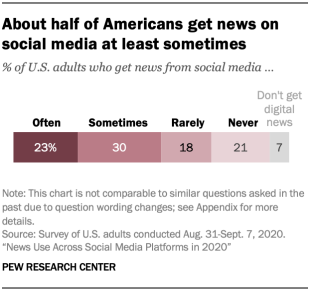
As social media firms battle to handle deceptive data on their platforms about the election, the COVID-19 pandemic and extra, a big portion of American citizens proceed to depend on those websites for information. About part of U.S. adults (53%) say they get information from social media “frequently” or “once in a while,” and this use is unfold out throughout quite a few other websites, in step with a Pew Analysis Heart survey carried out Aug. 31-Sept. 7, 2020.
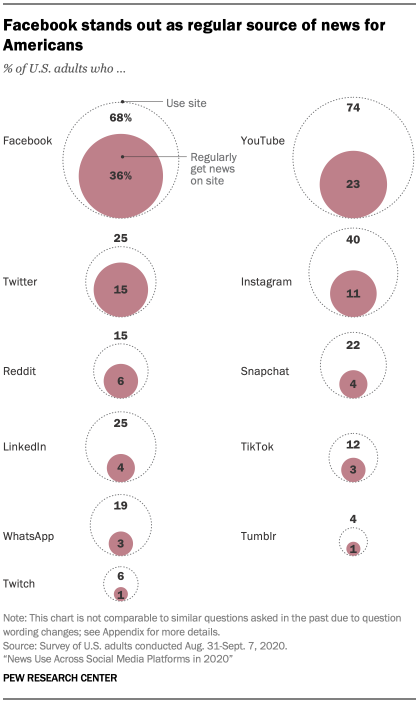
Amongst 11 social media websites requested about as a standard supply of reports, Fb sits on the best, with a few 3rd (36%) of American citizens getting information there frequently. YouTube comes subsequent, with 23% of U.S. adults frequently getting information there. Twitter serves as a standard information supply for 15% of U.S. adults.
Different social media websites are much less more likely to be common information resources. About one-in-ten American citizens or fewer record frequently getting information on Instagram (11%), Reddit (6%), Snapchat (4%), LinkedIn (4%), TikTok (3%), WhatsApp (3%), Tumblr (1%) and Twitch (1%).
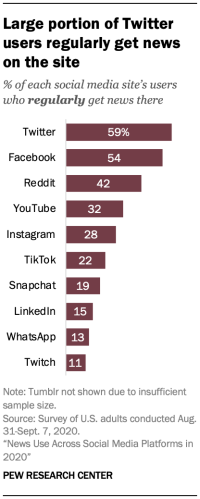
Those decrease percentages for information use are in some instances associated with the truth that fewer American citizens record the use of them in any respect, when put next with the stocks who use Fb and YouTube. If we imagine information customers as a portion of a web site’s general person base, some websites stand out as being extra “newsy” despite the fact that their overall target audience is somewhat small. Twitter, for instance, is utilized by 25% of U.S. adults, however over part of the ones customers get information at the web site frequently. And 42% of Reddit customers get information frequently at the web site, regardless that it general has an overly small person base (15% of U.S. adults say they use Reddit). Alternatively, YouTube, regardless that broadly used, sees a smaller portion of its customers turning to the web site for information frequently (32%).
Contents
There are in some instances drastic demographic variations between the individuals who flip to every social media web site for information. As an example, White adults make up a majority of the common information customers of Fb and Reddit however fewer than part of those that flip to Instagram for information. Each Black and Hispanic adults make up a few quarter of Instagram’s common information customers (22% and 27%, respectively). Individuals who frequently get information on Fb are much more likely to be girls than males (63% vs. 35%), whilst two-thirds of Reddit’s common information customers are males.
Nearly all of common information customers of many websites – YouTube, Twitter, Instagram, Reddit and LinkedIn – are Democrats or lean Democratic. This can be associated with the somewhat younger age profile of the inside track person base of those social media websites. No social media web site integrated right here has common information customers who’re much more likely to be Republican or lean Republican.
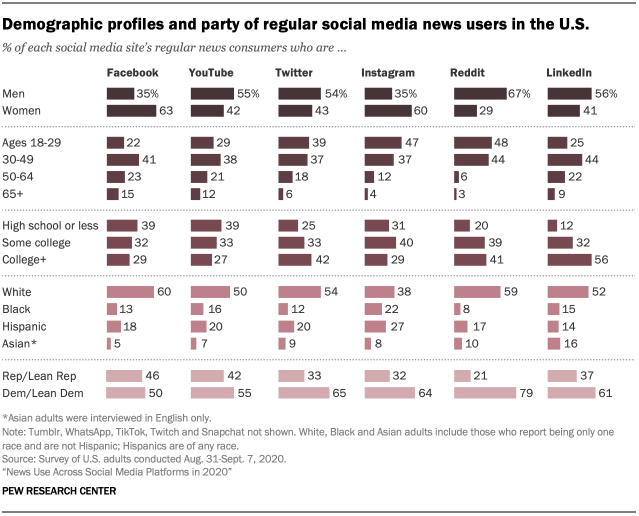
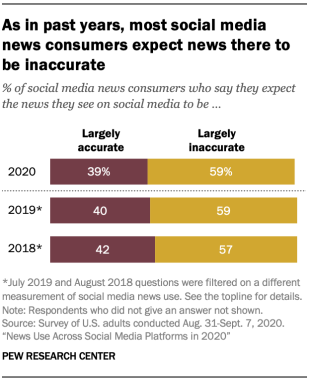
A majority of the American citizens who’re getting information on social media proceed to query its accuracy. About six-in-ten (59%) of those that no less than hardly get information on social media say they be expecting that information to be in large part misguided, whilst 39% be expecting it to be in large part correct. And regardless that there was expanding dialogue of the guidelines on social media, together with congressional hearings in 2019 and in 2020, this isn’t a brand new sentiment amongst social media information customers: Identical parts have stated they anticipated the inside track to be misguided since 2018.
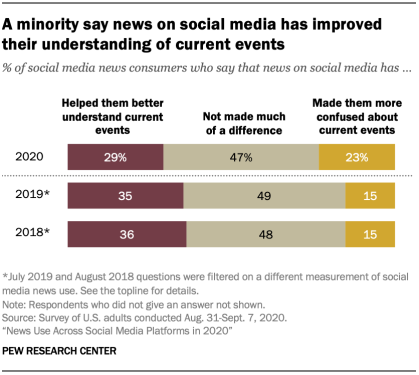
Maximum American citizens don’t say information on social media has helped them higher perceive present occasions. The biggest section, 47%, says it doesn’t make a lot of a distinction, whilst 29% say that it has helped their figuring out and 23% say it has if truth be told left them extra puzzled. This in large part displays responses to identical questions in 2018 and 2019, when a minority stated that social media information helped them higher perceive present occasions.


